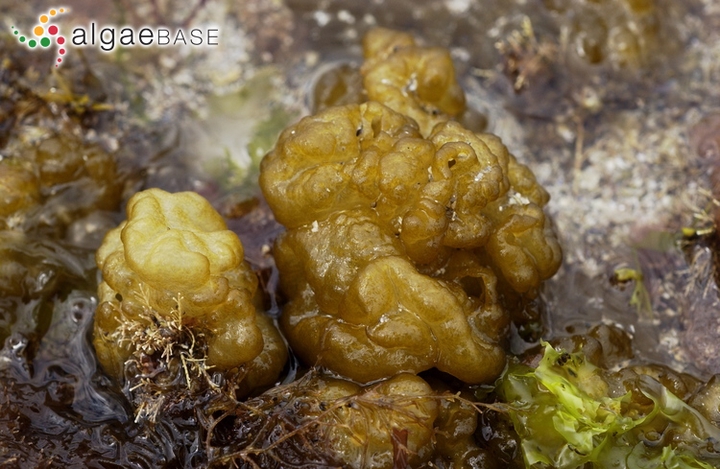Cryptic haploid stages in the life cycle of Leathesia marina (Chordariaceae, Phaeophyceae) under in vitro culture
 Image credit: Leathesia marina. Finavarra, Co. Clare, Ireland; MLWN. 2002. Michael Guiry. AlgaeBase
Image credit: Leathesia marina. Finavarra, Co. Clare, Ireland; MLWN. 2002. Michael Guiry. AlgaeBase
Abstract
We evaluated the life cycle of Leathesia marina through molecular analyses, culture studies, morphological observations and ploidy measurements. Macroscopic sporophytes were collected from two localities in Atlantic Patagonia and were cultured under long day (LD) and short day (SD) conditions. Molecular identification of the microscopic and macroscopic phases was performed through the cox 3 and rbc L genes and the phylogeny was assessed on the basis of single gene and concatenated data sets. Nuclear ploidy of each phase was estimated from the DNA contents of individual nuclei through epifluorescence microscopy and flow cytometry. Molecular results confirmed the identity of the Argentinian specimens as L. marina and revealed their conspecificity with L. marina from New Zealand, Germany and Japan. The sporophytic macrothalli (2n) released mitospores from plurilocular sporangia, which developed into globular microthalli (2n), morphologically similar to the sporophytes but not in size, constituting a generation of small diploid thalli, with a mean fluorescent nuclei cross‐sectional area of 3.21 ± 0.7 μm2. The unilocular sporangia released meiospores which developed two morphologically different types of microthalli: erect branched microthalli (n) with a nuclear area of 1.48 ± 0.07 µm2 that reproduces asexually, and prostrate branched microthalli (n) with a nuclear area of 1.24 ± 0.10 µm2 that reproduces sexually. The prostrate microthalli released gametes in LD conditions, which merged and produced macroscopic thalli with a nuclear cross‐sectional area of 3.45 ± 0.09 µm2. Flow cytometry confirmed that the erect and prostrate microthalli were haploid and that the globular microthalli and macrothalli were diploid.